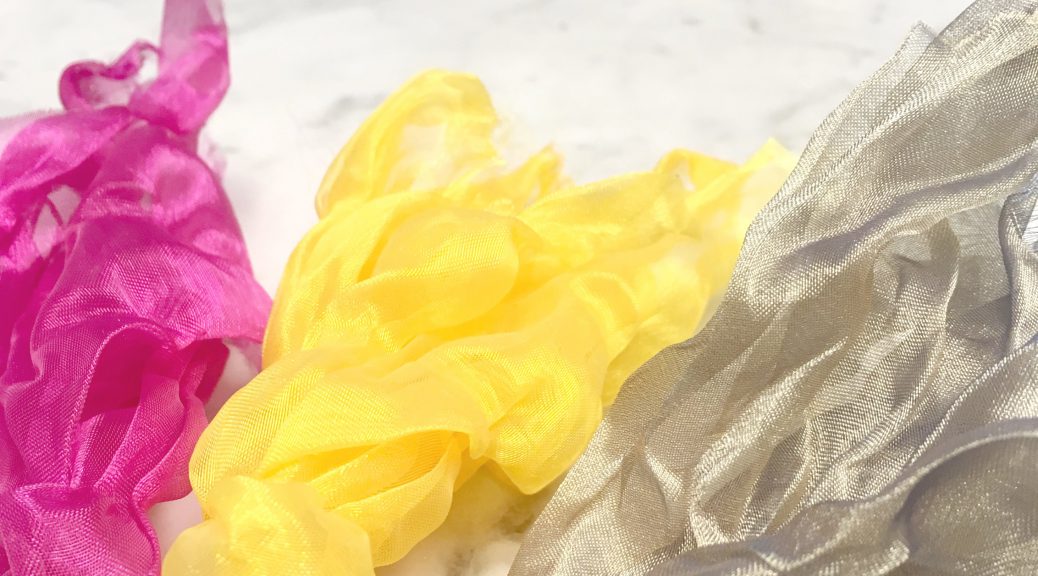Heat Setting
“Heat setting is a heat treatment by which shape retention, crease resistance, resilience and elasticity are imparted to the fibres. It also brings changes in strength, stretchability, softness, dyeability and sometimes on the colour of the material. All these changes are connected with the structural and chemical modifications occurring in the fibre.” – Textile Learner
Thermoplastics can be reshaped with heat (polyesters are thermoplastic synthetic fibres)
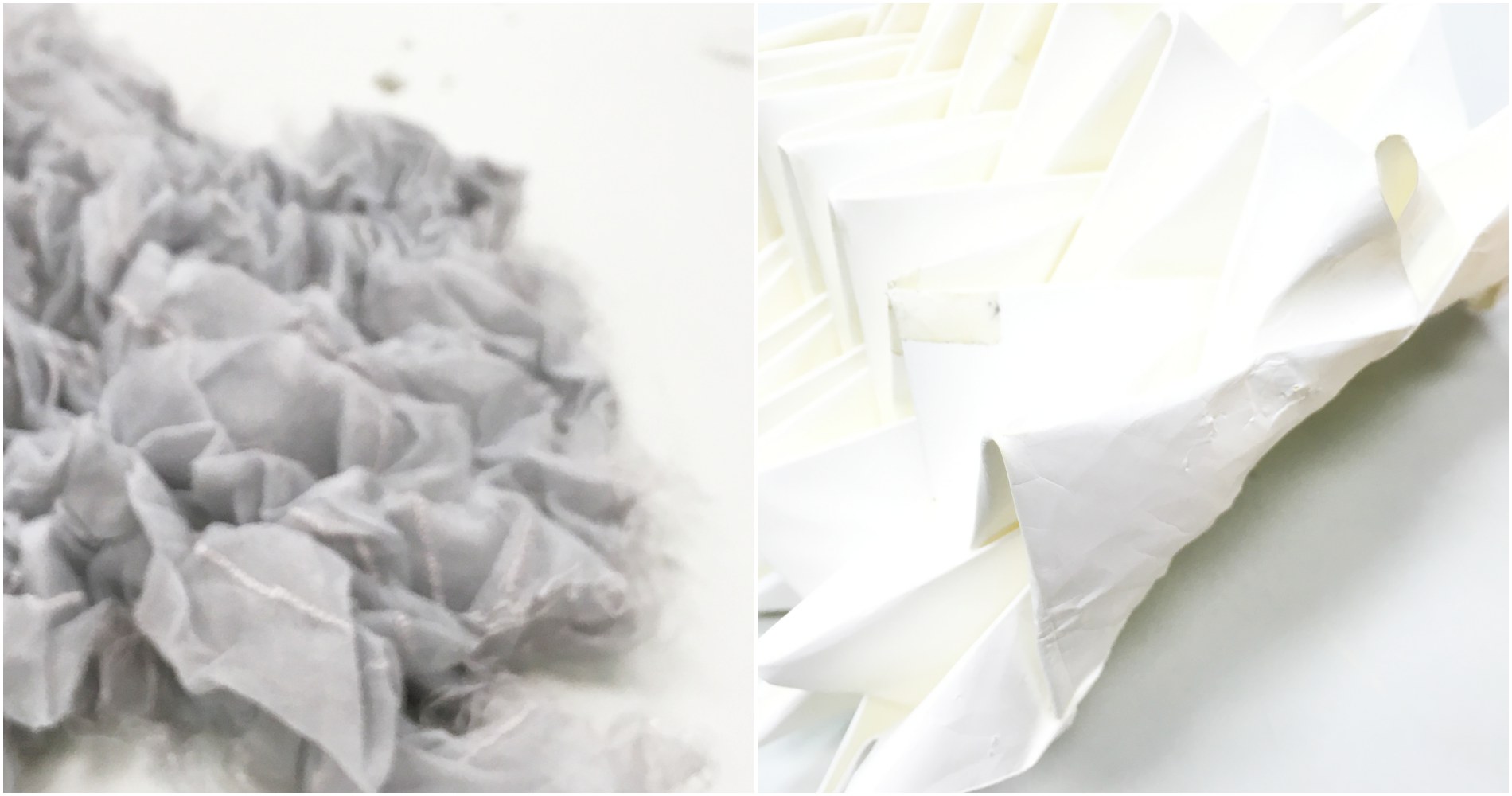
Materials required:
- 100% polyester organza
- Marble, wooden or plastics that do not melt
- Rubber bands
- Aluminium foil
- Pot (to steam or boil the cloth in)
Technique:
- Place the moulds and tightly wind rubber bands around it
- Wrap in aluminium foil
- Or: fold the polyester between two aluminium foils (pleating/ origami/ etc)
- Or: use foil to create spikes
- Steam or boil for at least 45 minutes
- Remove the cloth from the pot and allow them to cool
- Remove the foils and moulds
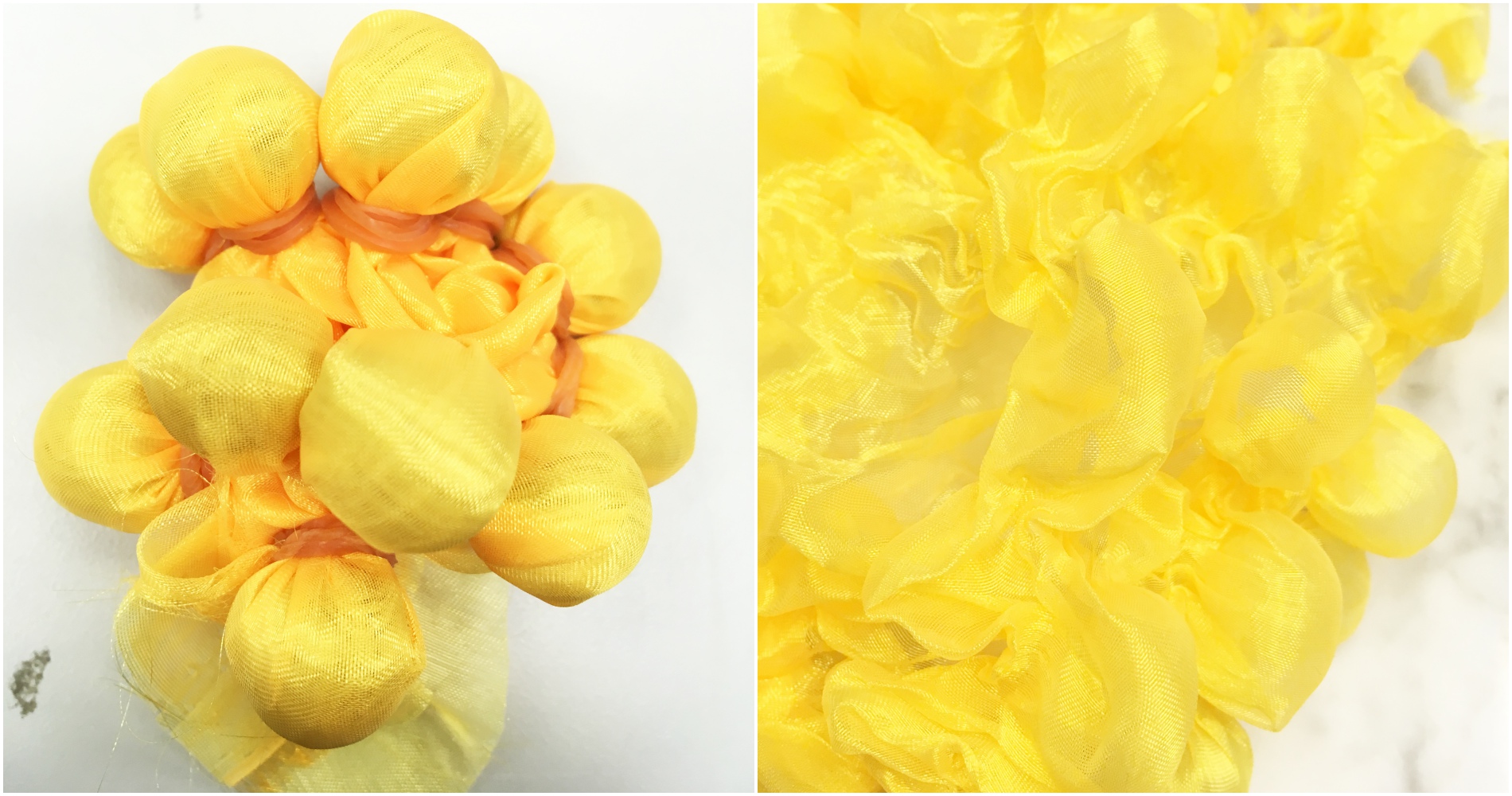

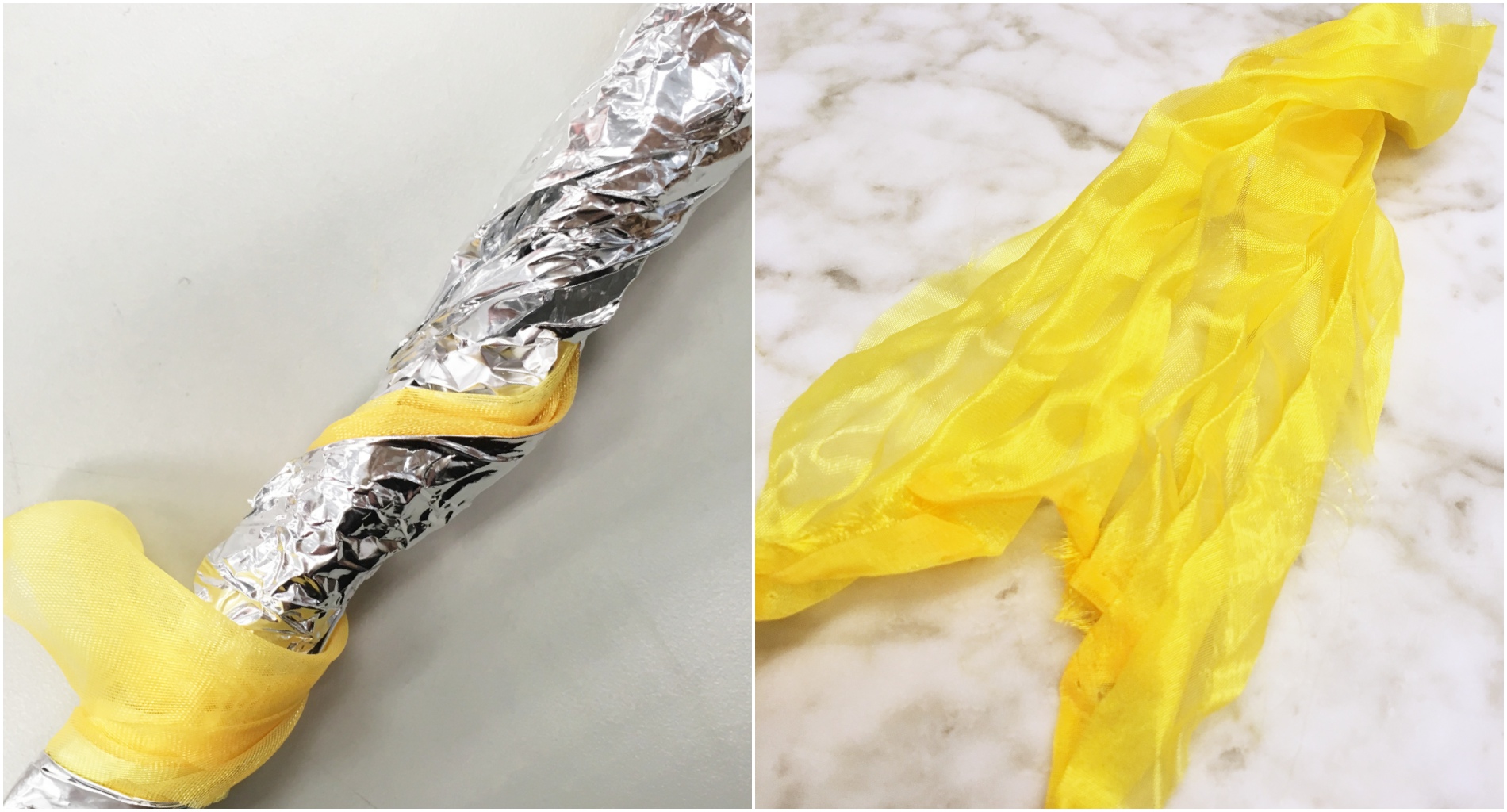
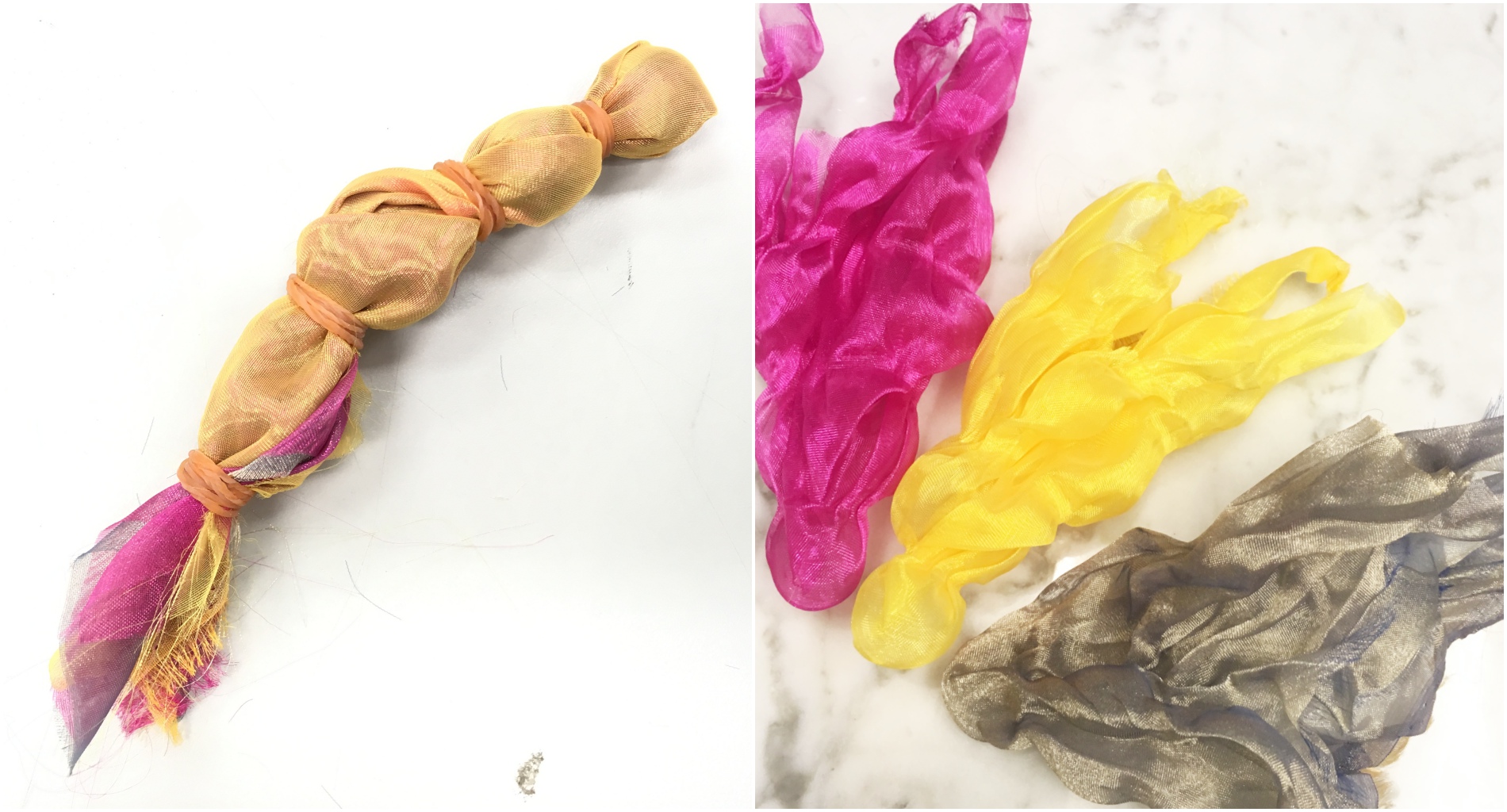
Applications include:
- Fashion items that require flexibility. A good example is Issey Miyake’s pleated garments
- Perhaps toys for children could incorporate such techniques too, creating tactile experiences that are safe to explore
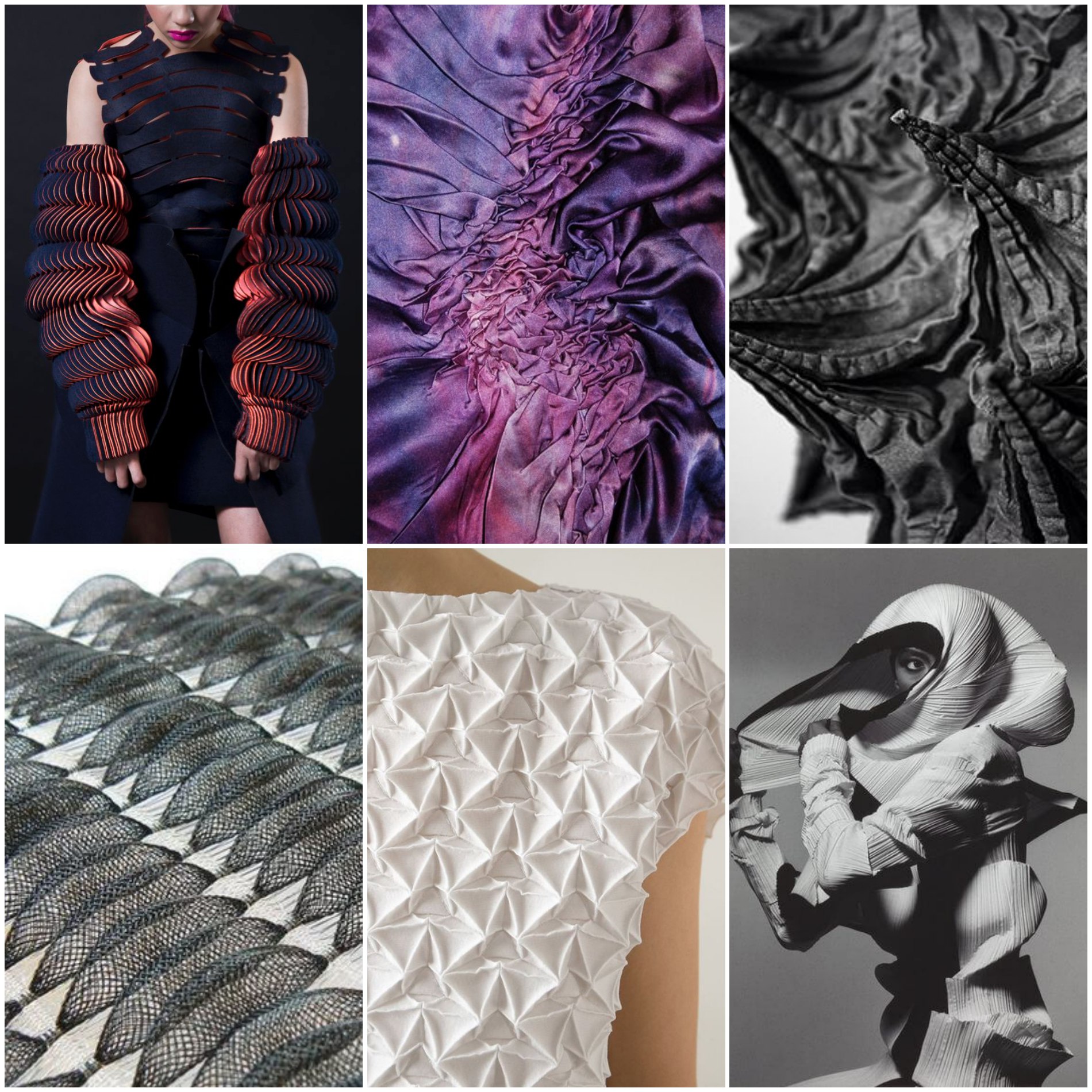
Personal reflections:
It was fascinating to manipulate fabric, giving it a sense of elasticity and fluidity. The technique is also simple to do, but the material is limited to thermoplastics. Nevertheless, it can also be highly useful as a non-wearable like shop front designs and curtains
Vacuum Forming
A sheet of plastic is heated and stretched over a mould, thus taking the shape of that object
Materials required:
- PVC sheet
- Vacuum forming machine
- Mould that has draft angles and no undercuts
Technique:
- Allow the machine to heat up
- Place the mould on the grill and lower it into the machine
- Secure the plastic sheet in between the frames
- Shift the heater over the plastic sheet
- When the plastic is heated sufficiently it will sag evenly
- The heating element is to be pushed away
- The vacuum is turned on and the mould raised
- Holes can be drilled into the mould if the corners of the plastic need to be sharp
- Also, if the mould is tall, pressure can be applied to the plastic first to stretch it
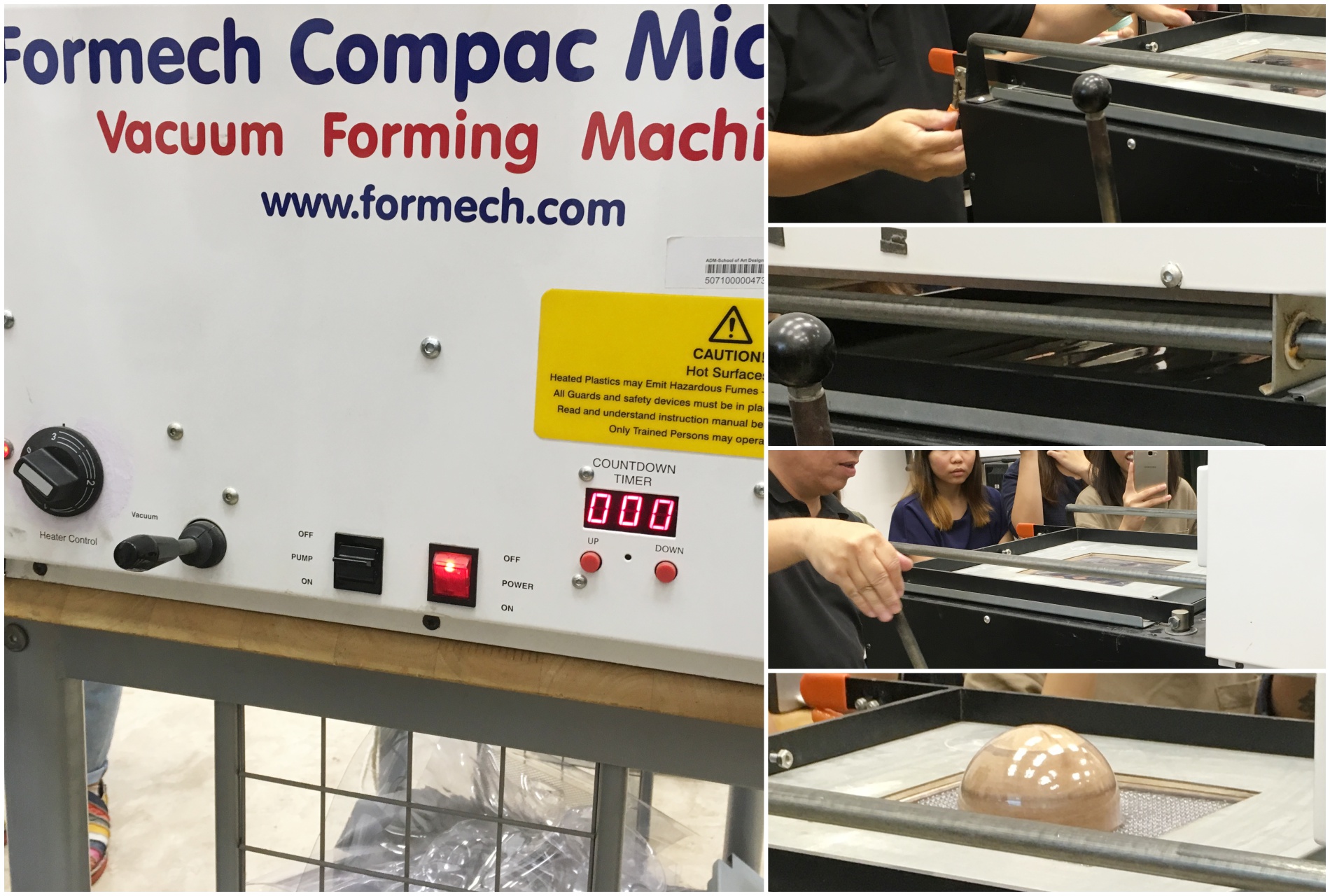

Applications include:
- Packaging
- Containers
- Prototyping
- Arts and craft sets
- Mould for resin, clay, etc
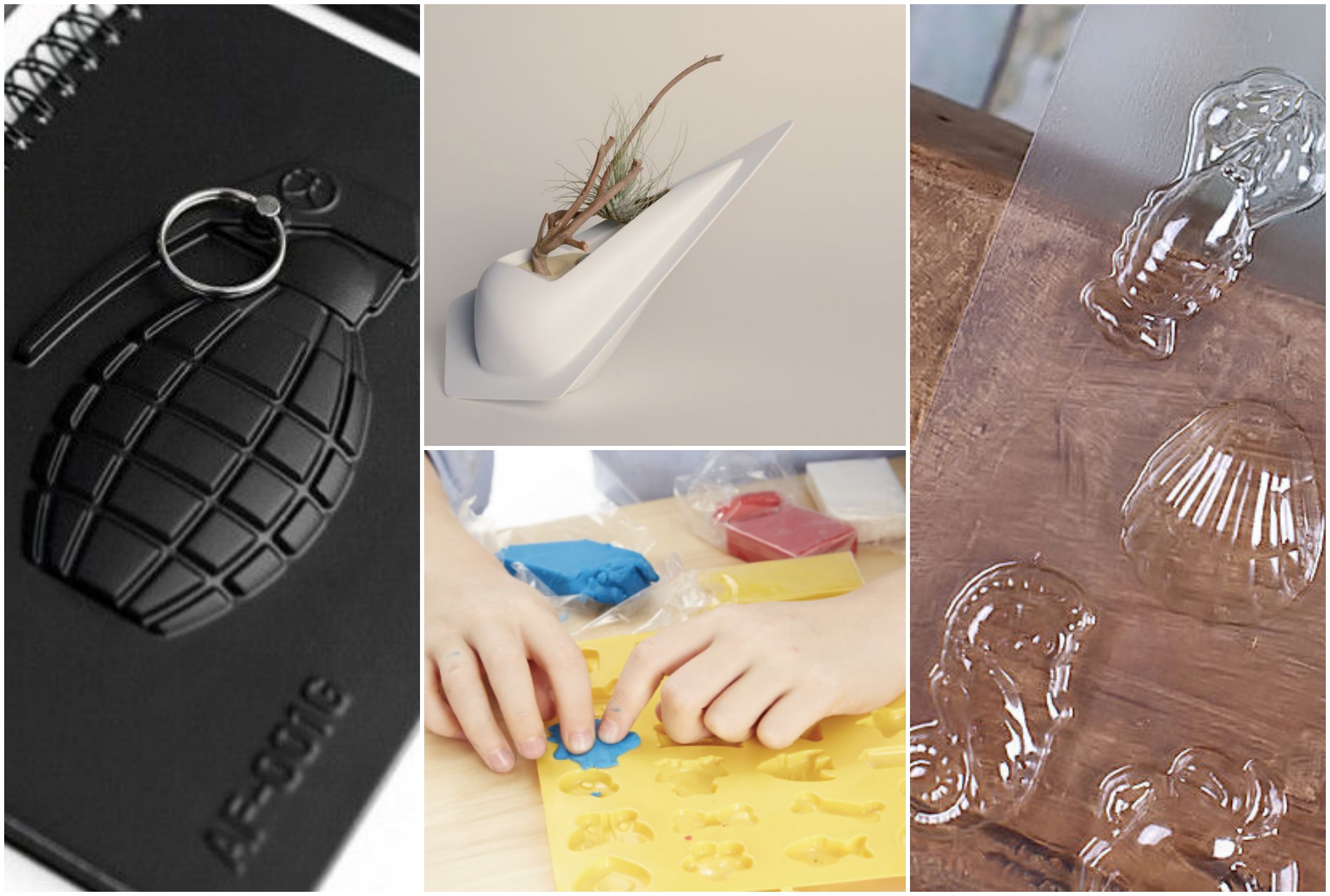
Personal reflections:
The possibilities seem boundless with vacuum forming as the PVC is highly pliable. The plastic is able to capture the large and small details of the mould. The end result is also neat (unless the mould is trapped within the plastic).
